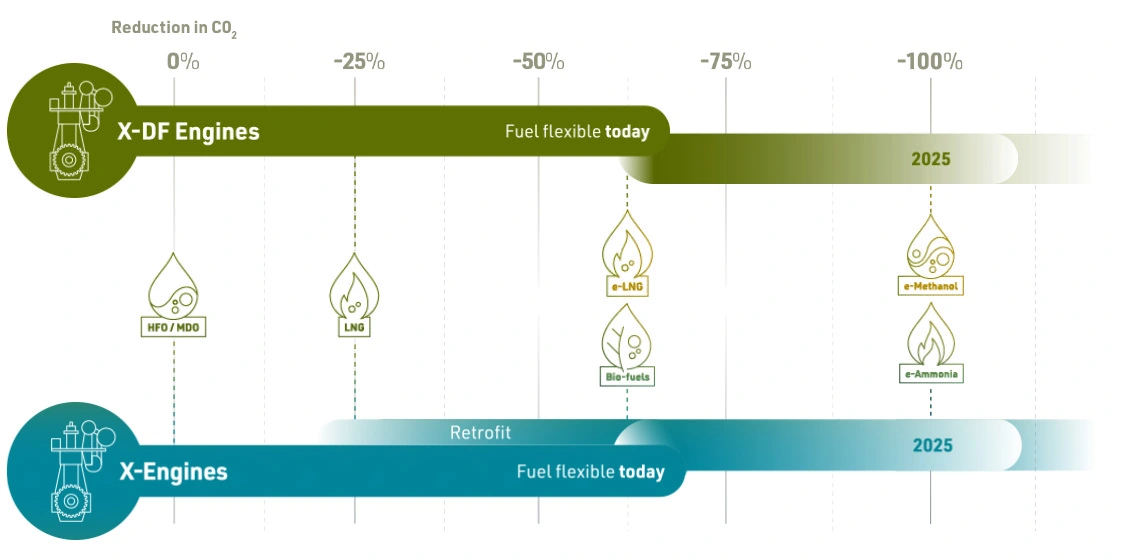Future Fuels
AIS is collaborating with WinGD, based in Winterthur Switzerland, to promote the adoption and implementation of their Future Fuel power generating solutions based on WinGD’s X-DF low speed, two stroke reciprocating engine range.
WinGD’s Ammonia XDF-A engines are already scheduled for delivery in 2025 and will offer a zero carbon emission solution with efficiencies greater than 50% across a wide load range – scalable in block sizes from 10MWe.
Another key advantages of low speed engines is their high electric inertia (~3x better than gas turbines or 4 stroke engines), which provides optimal support to stabilize renewable grid systems and potentially further increase the penetration of solar and wind in the energy mix.
Advantages of Ammonia

Carbon Free
As ammonia is a carbon-free fuel, using green ammonia, greenhouse gas emissions can be virtually eliminated.

Renewable Energy Mix
Ammonia can be produced from renewable energy sources, making it a sustainable option where dispatchable power is required to complement solar and wind power as part of the energy mix.

Energy Storage
Ammonia can be used as an H2 energy carrier or storage medium and can be synthesized using surplus electricity from renewable sources and stored for later use addressing intermittency of renewable energy generation.

Well-Established Infrastructure
Ammonia has an existing infrastructure for production, transportation, and handling, primarily due to its extensive use in the chemical and agricultural industries.

High Energy Density
Ammonia has a higher energy density than that other future fuel such as hydrogen facilitating transportation and storage.

Fuel Security and Diversity
Incorporating ammonia into the energy mix offers increased energy security from renewable sources an reduces dependency on conventional fuels, such as diesel or gas.


